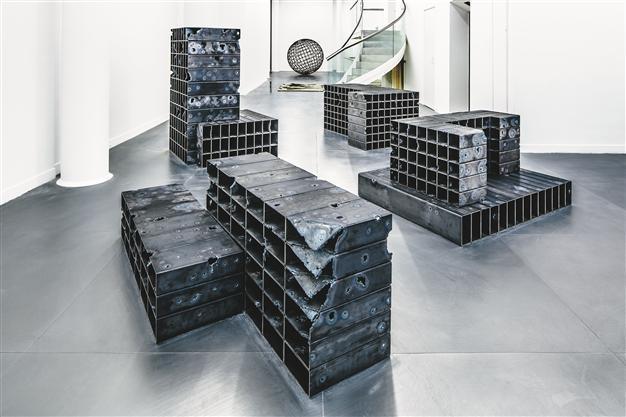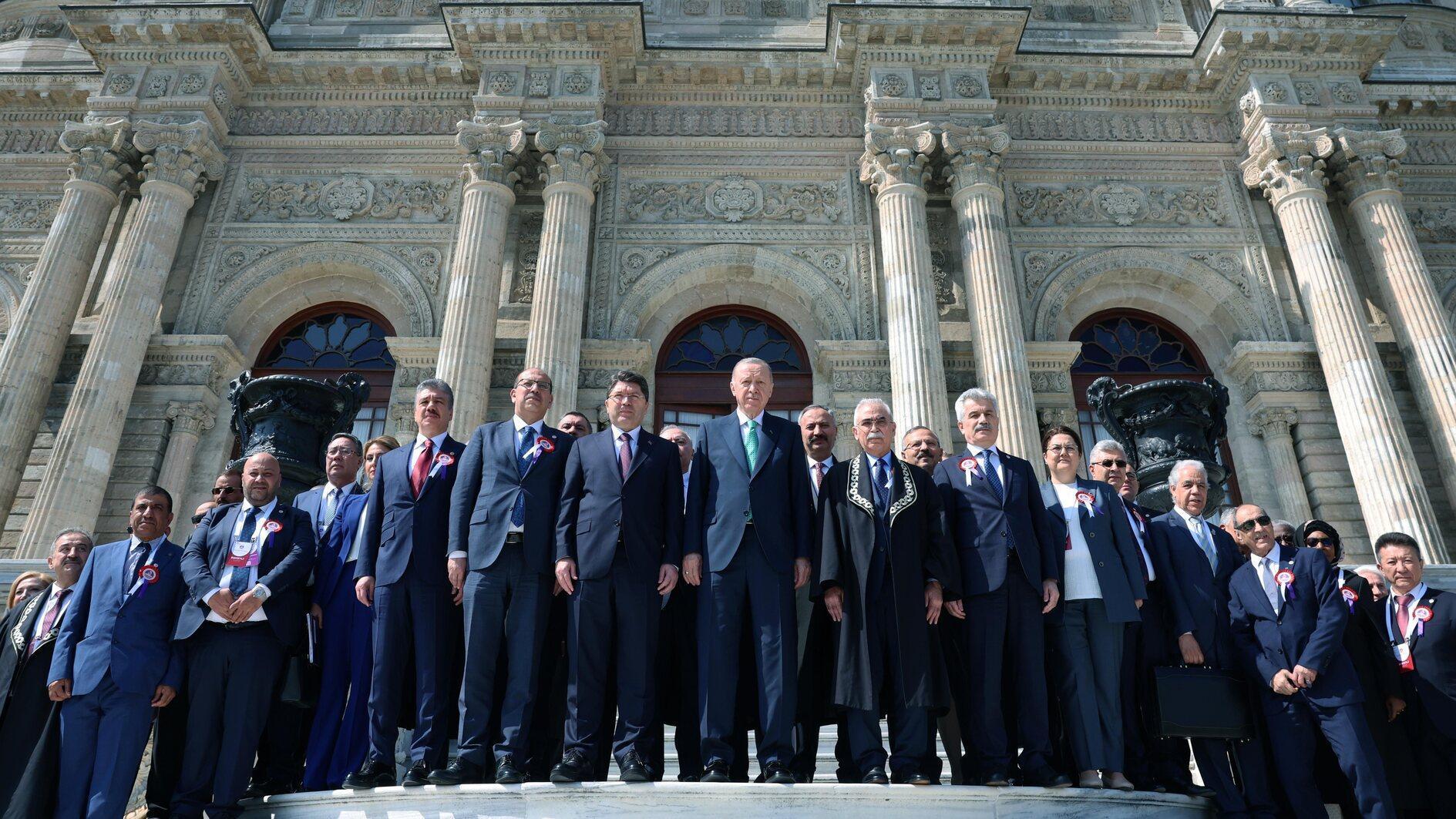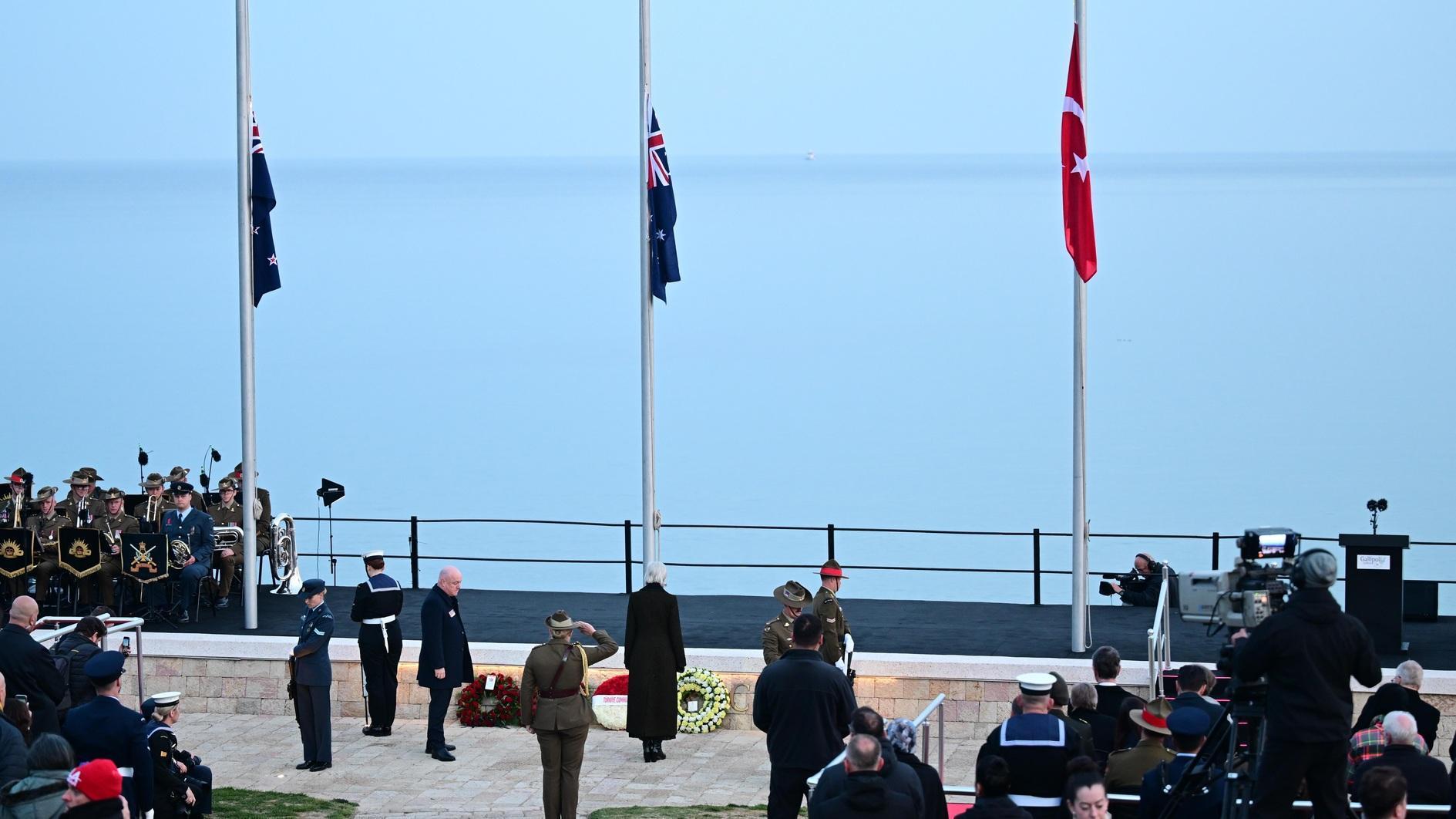Arter hosts Mona Hatoum's first solo exhibit in Turkey
ISTANBUL- Hürriyet Daily News

The exhibiton ‘You Are Still Here’ focuses on the last two decades of Mona Hatoum’s artistic production.
Arter welcomed renowned Lebanese video and installation artist Mona Hatoum’s first solo exhibition in Turkey on March 17. Entitled “You Are Still Here,” the exhibition is curated by Emre Baykal and presents more than 30 works dating from the 1990s to the present.Hatoum has also spent some time in Istanbul, producing a number of new pieces for the exhibition in collaboration with local fabricators and craft workshops.
The artist’s poetic and political oeuvre is realized in a diverse and often unconventional range of media, including installations, sculpture, video, photography and works on paper. In her work she has determinedly explored a sense of the malaise and unsettledness that permeates our contemporary world.
“You Are Still Here” focuses on the last two decades of Hatoum’s artistic production and aims at taking pieces from her oeuvre dedicated to a persistent investigation of a broad range of issues related to home and displacement, closeness and distance, loss and separation, surveillance and regimentation by institutional power structures, the endangered and violated human body.
Dating back to 1994
The exhibition takes its title from one of Hatoum’s works, “You Are Still Here,” which dates back to 1994 and was translated in a second version into Arabic in 2006. In both versions, the same sentence is sandblasted on the surface of a portrait format wall mirror. What appears in the mirror when the viewer faces the work is a momentary representation of the self: the viewer’s actual presence is doubled with his/her reflection in the mirror and both sides of this divided self are set in conversation.
As described by the artist, the content of this conversation is all about a confirmation of existence and survival. Yet in essence, this reassuring self affirmation strongly implies a testimony to and a celebration of survival against the odds in the face of unpredictability and potential danger.
The exhibition opened on March 17 with an imposing work, “Bunker,” an installation with six architectural steel structures selected from a larger set of twenty two. Achieved by the repetition of a single industrial element, the rigidity of the grid pattern in Bunker and the geometrical forms employed in the work are defaced by cuts, bends and burns. The scale of these modules gives them the appearance of architectural models of a future project, with signs of destruction already built into the plan.
Installed on the gallery’s ground floor, the work is visually accessible from the pedestrian thoroughfare Istiklal Avenue, Istanbul’s main artery for culture and arts, thus transposing an unfamiliar cityscape into the gallery space.
Special work for Istanbul show
“Kapan,” an installation created specifically for the Istanbul exhibition, continues Hatoum’s interest in the grid and architectural references, this time juxtaposing the roughness of steel reinforcing rods with the sensuousness and fragility of hand blown glass. “Kapan, “which means “trap” in Turkish, consists of five structures made of steel, each slightly different in size, yet all scaled to average human height. Combining a solid geometry with imprecise forms, and solidity with fragility, almost welded into each other, the work subtly resonates the vulnerability of the human body — threatened, captured and controlled by power structures — as well as one’s own sense of inner exile.
Another work inspired by the location is “Istanbul Is Shift,” a wool carpet on which Hatoum maps the whole world as a danger zone by drawing yellow circles of seismic waves all over its surface and dividing it into slightly shifted segments. “You Are Still Here” includes some of Hatoum’s widely known works such as “Silence,” “Deep Throat,” “Grater Divide,” “Misbah,” “Globe,” “Worry Beads” and the video documentation of her 1985 performance “Roadworks.”
TRANSFORMING DOMESTIC OBJECTS
ISTANBUL- Hürriyet Daily News
Mona Hatoum started her career making visceral video and performance work in the 1980s that focused with great intensity on the body. Since the beginning of the 1990s, her work moved increasingly towards largescale installations that aim to engage the viewer in conflicting emotions
of desire and revulsion, fear and fascination. In her singular sculptures, Hatoum has transformed familiar, everyday, domestic objects such as chairs, cots and kitchen utensils into things foreign, threatening and sometimes dangerous.
She was born into a Palestinian family in Beirut, Lebanon in 1952 and now lives and works in London and Berlin. She has participated in numerous important group exhibitions including The Turner Prize (1995), Venice Biennale (1995 and 2005), Istanbul Biennial (1995 and 2011), Documenta XI, Kassel (2002) and Biennale of Sydney (2006).
















